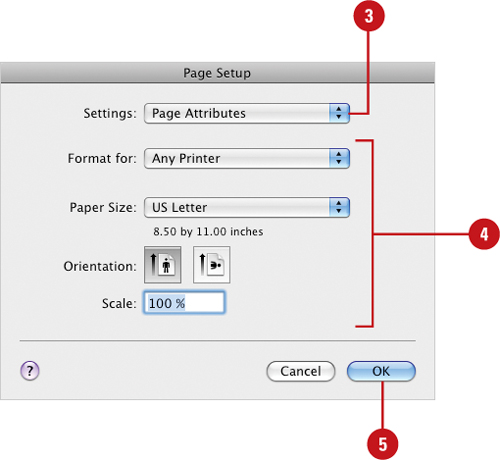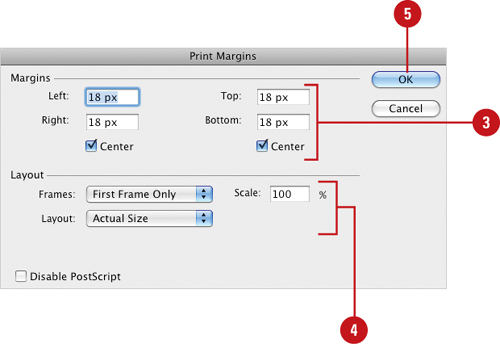You can use the Page Setup dialog box in Macintosh to
select the size and location in the printer of the paper you want to
use. You can also select the page orientation (portrait or landscape)
that best fits the entire document or any selection. Portrait orients the page vertically (taller than it is wide) and landscape
orients the page horizontally (wider than it is tall). When you shift
between the two, the margin settings automatically change. Margins
are the blank spaces between the edges of a page and the image. The
printer only prints within these margins. You can use the Print Margins
dialog box to change margins and layout. The layout options allow you to
specify the frames you want to print, and the frame size and display on
the page.
Work with Page Setup in Macintosh
1. Open a document.
|
2. Click the File menu, and then click Page Setup.
|
3. Click the Settings list arrow, and then click Page Attributes.
 |
4. Select from the various Page Attributes options:
- Format For. Click the Format
For list arrow, and then select a printer. If your printer is not
accessible from the list, click the Edit Printer List, and then add your
printer (you may need the printer disc, or access to the Internet, to
load the latest drivers).
- Paper Size.
Click the Paper Size list arrow, and then select from the available
options. The default printer will determine the available paper sizes.
- Orientation. Click the Portrait, Landscape Left, or Landscape Right button.
- Scale. Enter a percentage value to increase (over 100) or decrease (under 100) the size of the printed document.
|
5. Click OK.
|
Change Print Margins and Layout in Macintosh
|
2. Click the File menu, and then click Print Margins.
|
3. Enter Left, Right, Top, and Bottom page margins, and then select the Center check boxes to center material on the page.
 |
4. Select from the Layout options:
- Frames. Click the Frames list arrow, and then click First Frame Only or All Frames.
- Layout. Click the Layout list arrow, and then select a layout option: Actual Size, Fit On One Page, or one of the Storyboard options.
- Scale. Enter a scale percentage value.
|
5. Click OK. |
|